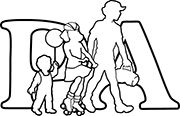March 1 is Baby Sleep Day- unfortunately this does not mean that your infant will magically be a better sleeper on this day, rather it’s a day to bring attention and recognition to the important of infant sleep. Infant sleep patterns are often a topic of great concern for new parents, and something that we talk a lot about during well child exams especially since sleep patterns change a lot in the first year of life. Newborn babies sleep in period of 30 minutes to 3 hours and their cycles are largely drive by the need to feed. At this point infants can sleep anywhere from 11-17 hours/day. By 2-3 months infants will spend more time awake and not feeding during the day and should start to develop a consistent bedtime. At 4 months total sleep time is about 11-15 hours with 3-4 naps per day that start about 2 hours after the last feed (although some only take 2 naps/day). By 6 months infants no longer need to feed at night, so although they make still awaken at night they should learn to go back to sleep without feeding for a 10-12 hour stretch at night with a total sleep time of 11-15 hours.
Like all developmental skill some infants sleep really well on their own while others need more hands on training from parents. You can help your little one from the very beginning by establishing a bedtime sleep routine. This is 1-3 calming activities, like bathing, singing, reading a book, or just some quiet time, that you do in the same pattern each time. Try to separate feeding from sleeping by feeding first thing after waking instead of right before going back down. Infants under 2 months often need help to fall asleep such as swaddling, swinging or rocking, or a pacifier, however you can try to practice self-soothing by putting your baby down while still drowsy. Formal sleep training is not recommended prior to 4 months, but can start at that age. If you haven’t established a bedtime routine this a great time to do it. Aim for going to bed between 7-8 pm as it can be harder to get an infant to sleep after 9 pm. Put your infant to sleep while still awake but drowsy so that they can learn how to self-soothe at that time. This will help them self-soothe when they awaken at night. Most infants (and in fact all people) have 2-6 awakenings per night and need to learn how to go back to sleep without feeding at 6 months of age. There are many different ways to help 6 month olds achieve this goal from the “cry it out” method to rocking and soothing in other ways. It can be easier to not respond to these awakenings if they are sleeping in their own room, so this can be a good time to move them into their own room if they aren’t already there. Naps by this age are usually twice daily and anywhere from 30 minutes to 2 hours.
Infants should always sleep in their own safe sleeping space to prevent Sudden Infant Death Syndrome, SIDS. It should have a firm mattress and no pillows, blankets, stuffed animals or any other objects in that space. Infants can have a sleep sack or a swaddle blanket that is tight. This can either be in the parents’ room or their own room depending on parental preference. Regular beds, couches, and chairs are too soft and contain too many blankets for infants to be safe sleeping. Infants should also be placed on their back to sleep until they are 1 year old. Many infants learn to roll between 4-8 months in which case parents do not need to flip them over throughout the night but should always place them on their back when putting them down. They should also stop using a swaddle blanket when their child learns how to roll onto their stomach. Of course if you have any questions or concerns please contact your pediatrician. And for more information check out the Pediatric Sleep Council website https://www.babysleep.com/.
Alaina M. Brown, MD FAAP

